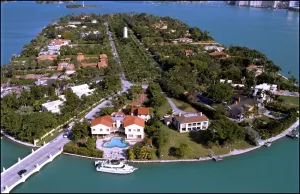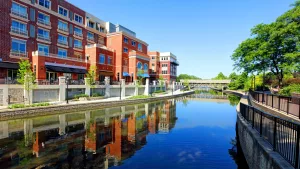The Most Dangerous Neighborhoods in New York City (2025)
Go Back To Previous PageIf you live in any major city, you must consider the crime risk. Unfortunately, that also applies to living in NYC. The good news is that, based on the sheer number of daily crimes, New York is one of the safer cities in the U.S. If you rate it per capita, the crime rate decreases even further. However, not all NYC neighborhoods are equal in crime and safety. Keep reading to know the most dangerous ones across the New York boroughs. It will help you determine which area of the city is best for you and which you should avoid. What are the Most Dangerous Neighborhoods in New York City? Here are the most dangerous neighborhoods in New York for 2025.
Some are among the most dangerous communities in the United States. New York City even gives nearby cities like Philadelphia, PA, a run for their money in terms of unsafe neighborhoods.
The absolute worst parts of Philly, similar to NYC, are ones you want to avoid when possible. The rankings are calculated based on the number of violent crimes per 100,000 residents for each area, compared to the New York violent crime average. Violent crimes include murder, rape, robbery, and sexual assault.
The most dangerous places in New York are based on data collected from local law enforcement agencies, and when unavailable, estimates are derived from demographic data.
The Dangerous Neighborhoods in New York City: Brownsville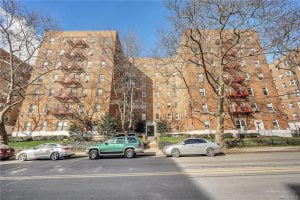
This East Brooklyn neighborhood is one of the city’s most dangerous and, by far, one of the Bronx‘s worst neighborhoods. It has one of the highest homicide rates and a high percentage of drug-related crimes. For some, it has some of the most dangerous streets in the United States. This is by far the worst area of NYC.
According to the New York Department of Health and Mental Hygiene (DOHMH), the neighborhood has a much higher than the national average rate of assault-related hospitalizations.
There are 175 per 100,000 people, compared to just 59 per 100,000 in both Brooklyn as a whole and all of New York City combined. The last thing to note about Brownsville is that there is room for improvement. These statistics continue to worsen yearly, with little sign of progress.
The second Dangerous Neighborhood in New York City is Jamaica.
Jamaica, in Queens, is among the worst neighborhoods in Queens. It has a significant commercial section and a smaller residential area. The area has several small businesses and many retail outlets. Jamaica has many government establishments within its borders, providing an added boost to the economy of the neighborhood and the city.
This area is home to many unruly and aggressive individuals; numerous street fights circulating on the internet originate from this neighborhood. Jamaica still has some gang-related activity, although that has dropped sharply.
Nevertheless, Jamaica is still one of the roughest parts of Queens; there is usually at least one shooting incident every month, and some result in multiple casualties. Muggings are also quite frequent, with a lot of low-level drug activity.
Hunts Point
Hunts Point is a neighborhood located on a peninsula on the East River in the South Bronx. This area is possibly the worst neighborhood in New York. It is home to a range of food and other shipping industries. Violent crime rates in the neighborhood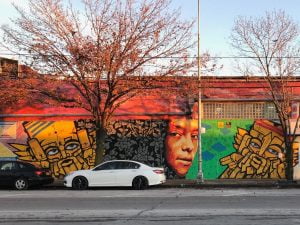 have been increasing for years.
have been increasing for years.
Approximately 30 percent of the residents live below the poverty line, which is significantly higher than the NYC average.
Hunts Point also has a 12 percent unemployment rate, contributing to increased crime data. Besides having a juvenile detention center in the neighborhood, Hunts Point has a higher incarceration rate than most other NYC neighborhoods.
According to DOHMH, the rate of non-fatal assault hospitalizations trails closely behind Brownsville. There are 151 for every 100,000 people.
Mott Haven
An adjacent Bronx neighborhood, just west of Hunts Point, rounds out this list. Almost half of all Mott Haven residents did not finish high school, and only 16 percent have a college degree, contributing to higher poverty rates and crime.
It has the highest rate of non-fatal assault hospitalizations (186 per 100,000 people) of any neighborhood in the city. Violent crime is more than 300 percent of the national average in Mott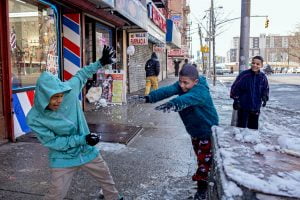 Haven. Also, its incarceration rate is almost three times that of NYC. Don’t take public transportation there!
Haven. Also, its incarceration rate is almost three times that of NYC. Don’t take public transportation there!
Bedford-Stuyvesant, a violent neighborhood in Brooklyn
Brooklyn’s Bedford-Stuyvesant neighborhood has long been known for its crime rates. Although it’s no longer as dangerous as when Biggie was rapping about “Do or Die, Bed-Stuy,” the overall property crime rate has increased rather than decreased in the past few years.
Robberies, motor vehicle thefts, and encounters with violent individuals are common in the Bed-Stuy area. You must stay alert.
In Bedford-Stuyvesant, your chances of becoming a victim of crime are roughly 1 in 35. The violent crime rate stands at approximately 1,065 incidents per 100,000 people, while the overall crime rate is about 2,902 per 100,000.
This area is considered one to avoid in NYC, whether you’re visiting or looking for a long-term residence in the city.
Midtown
Midtown is one of the best places to visit in New York, but it’s also one of the most unsafe areas in New York City and one of the worst parts of Manhattan. Its massive attractions make it a popular attraction. There’s Central Park, Times Square, and clusters of pickpockets and muggers. For a neighborhood that houses 62,000 people, property crime rates are at 740 per 10,000 people, while violent crime rates are at 120 per 10,000.
East Harlem a.k.a. Spanish Harlem
This, perhaps, should be one of the most diversified neighborhoods in the city. Located in upper Manhattan, East Harlem has been the center for immigrants. In the past, this neighborhood, both ghetto and affluent, saw so much crime, from robberies and shootings to drug sale rings, rapes, and grand larcenies.
If you ever wonder, “Is Harlem safe?” 23rd and 25th precincts, and then 129th St and 7th Avenue, will be on the lookout for crime. Even the subway station around 25th Street could make you feel unsafe in the Harlem ghetto.
Lately, however, average crime rates have declined, and the number of patrol officers has increased. So far, East Harlem’s violent crimes are 264% greater than the national average. Still, East Harlem’s safety is better than that of more than 23% of other New York cities.
Your chance of being a victim in East Harlem is about 1 in 22 people. The average violent crime rate is about 1,616 per 100,000 people, and the average is about 4,554 per 100,000 people. With increased law enforcement, these numbers could soon change for the better.
Fordham
Though located in the Bronx and ranked the 14th best, Fordham is still one of the most dangerous areas in New York. With one of the smallest populations, 64,000 inhabitants, its total crime rate per 100,000 people is an alarming 3,135. If you live in Fordham, your chances of being a crime victim are 1 in 32.
Although Fordham is partly a college town because of the presence of a portion of the Fordham University campus, it is still considered one of the less desirable areas of New York. Despite its small size, this Bronx neighborhood has an aggravated assault rate that is nearly five times the national average.
Additionally, there is a separate police force for the North and South sides of the area. Your chance of becoming a victim in this area is approximately 1 in 29. The average violent crime rate is about 1,238 incidents per 100,000 people, while the national average is around 3,569 per 100,000.
It is advisable to avoid walking alone at night in Fordham. The crime rate in this area has remained consistent over the years, so it will be interesting to see how it evolves in the future.
Learn More About the Most Dangerous Neighborhoods in New York City
Now that you know which NYC neighborhoods are the most dangerous, you can decide which part of the city best suits your lifestyle. Weigh all the factors—including finding the safest neighborhoods in NYC—to make the most informed choice possible.
At NestApple, we aim to simplify buying and selling homes in NYC and avoid astronomical broker fees. We represent buyers, sellers, and tenants at a third of the cost of what most firms charge. If you are considering moving to New York or already live here and would like to relocate, please contact us to learn more.

